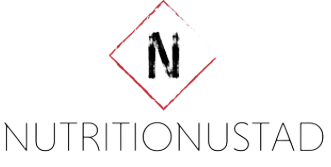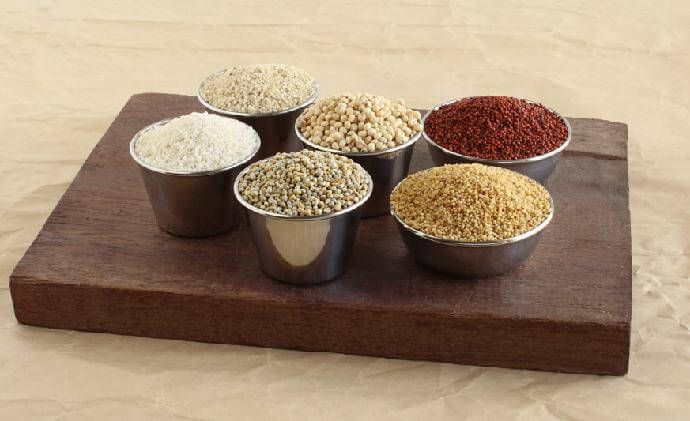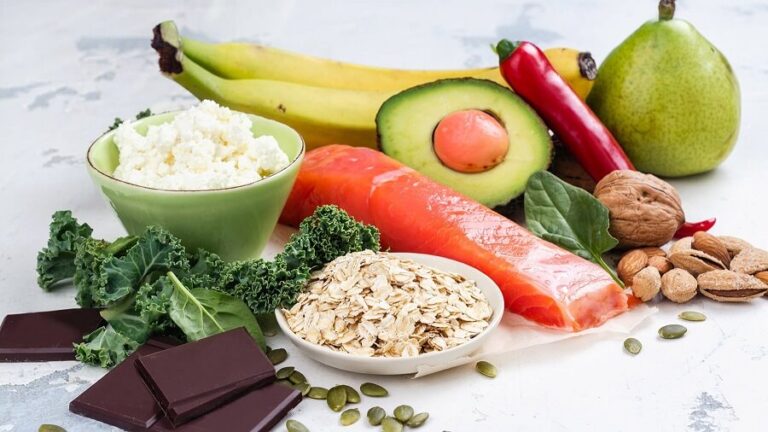Millet: What is it?
Millet is a seed of the plant (Panicum miliaceum), an herb of the Poaceae family. The seeds have been used for thousands of years in agriculture, and, due to their high yield, they are one of the grains most used to feed birds.
The leading country that grows millet is India; its consumption is widespread in this country. Indian cooking recipes that use this crop: usually combine the seeds with vegetables and all kinds of spices such as turmeric and curry.
Millet seeds can vary in color (often yellow or red) and size. In addition, in natural stores, they can be bought in the form of flakes and flour. The most classic millet recipe is porridge. Although due to its neutral flavor, it is such a versatile food that you can prepare vegetable burgers or sweet cakes.
The following article describes the benefits, properties, and contraindications of millet. Does it have gluten?
Millet – Nutritional Properties
The nutritional properties of millet are similar to those of other pseudocereals such as buckwheat and quinoa. 100 g of the dry product provides approximately 11 g of vegetable proteins of high biological value.
Millet does not contain gluten, so it is allowed for people with celiac disease or a gluten-free diet by choice.
Another of the nutritional properties of millet is its low glycemic index, its content of healthy monounsaturated fats, and an excellent profile of essential amino acids.
It is also a food with a high vegetable fiber content; it represents around 9-10% of the dry weight. Its mineral content is similar to other pseudo-grains, with potassium and magnesium standing out. In conclusion, it is an inexpensive and essential food for a healthy diet.
Nutritional composition of 100 g of millet ²:
- Calories – 378 kcal
- Carbohydrates – 73 g
- Total fibers – 8.5 g
- Proteins – 11 g
- Total fat – 4.2 g
- Vegetable Omega-3 – 118 mg.
- Iron: 3.0 mg
- Magnesio: 114 mg
- Cholesterol: 0 mg
Millet properties:
- Low glycemic index
- High fiber content
- It does not contain gluten
- The excellent amino acid profile
- The increased range of vitamins and minerals
Millet benefits
The benefits of millet are the normalization of blood glucose levels, the reduction of bad cholesterol, and the regulation of blood pressure. This is explained because it is a food with a high vegetable fiber content and healthy fats. In summary, the benefits of this food are:
- Improves digestion processes
- Regulates blood pressure
- Helps in muscle recovery processes
- Cover the protein needs of vegetarians
- Lower bad cholesterol
Do you have contraindications?
Millet contains a particular phytonutrient: phytic acid. This molecule has been shown to have the ability to affect thyroid hormone production to a lesser degree. (1) This effect is called the “chromogenic factor.” ¹ Similar substances are also found in soybeans, cabbage, sweet potatoes, and flaxseed. If you have thyroid problems, these foods should be used with caution.
Although including this pseudocereal in the diet is considered a healthy habit. An excess in the quantities of millet (basing the diet almost entirely on said food) can alter the activity of the thyroid gland. Some studies (1) show that a lack of nourishment with iodine could enhance this effect.
However, at no time is it being said that a plate of millet porridge can affect the hormonal balance of a healthy person. Scientists emphasize that consumption is dangerous only when it is the primary or almost only source of daily calories. For example, when doing a mono diet based on this food.
How to cook millet?
Porridge is the most traditional way of cooking millet. You can also use flour to make savory bread and cakes. It is cooked, left to park in many eastern countries, and then cut with a string accompanied by salty cheeses. In addition, kvass and other low-alcohol beverages are made from this pseudocereal. The steps for cooking millet are:
- Let the seeds soak for 6 hours or the night before.
- Wash and rinse at least three times.
- Toast for 5 minutes in vegetable oil.
- Boil 2.5 parts of water and 1 part of millet in a pot.
- Cook for 15 minutes.
- Add 15 g of ghee butter or regular butter and spices.
It should be noted that if, after cooking, it is left exposed to the air, it oxidizes quickly and turns bitter. To avoid this, millet should be cooked in small quantities and if stored, make sure it is in a hermetically closed container in a dark and cool place.
What we know as millet is a seed of grass from the Poaceae families. Like other pseudocereals, it does not contain gluten. The nutritional properties of millet are its high content of plant protein, fiber, and a complete amino acid profile. Cooking millet is easy; it takes just 20 minutes and only three ingredients.







